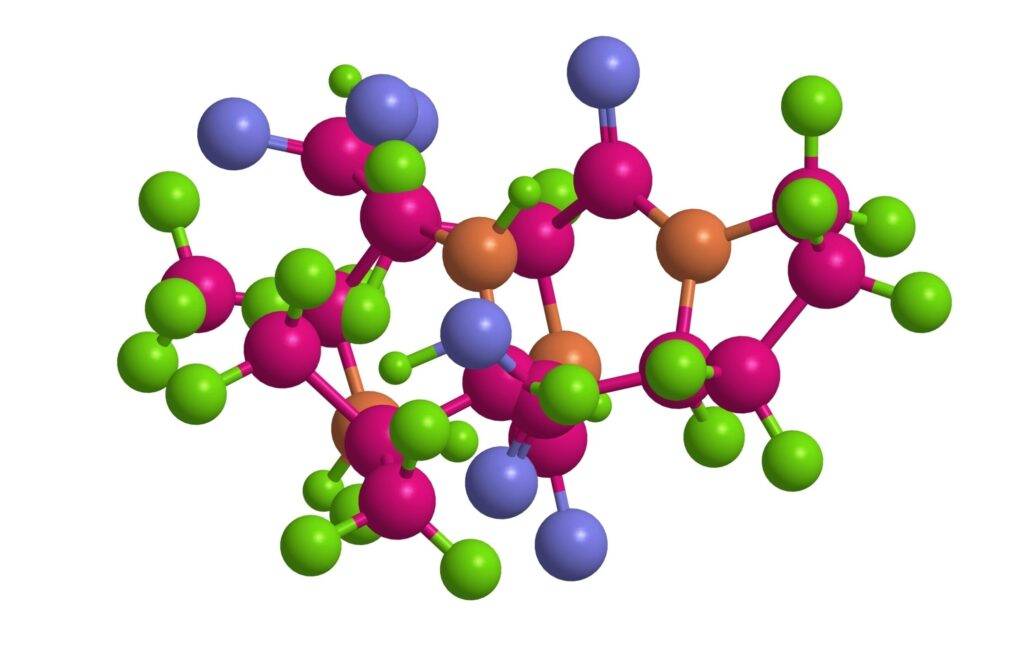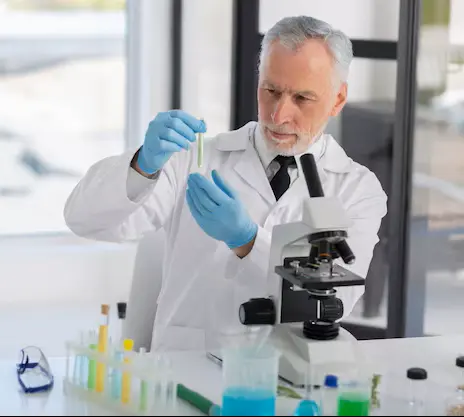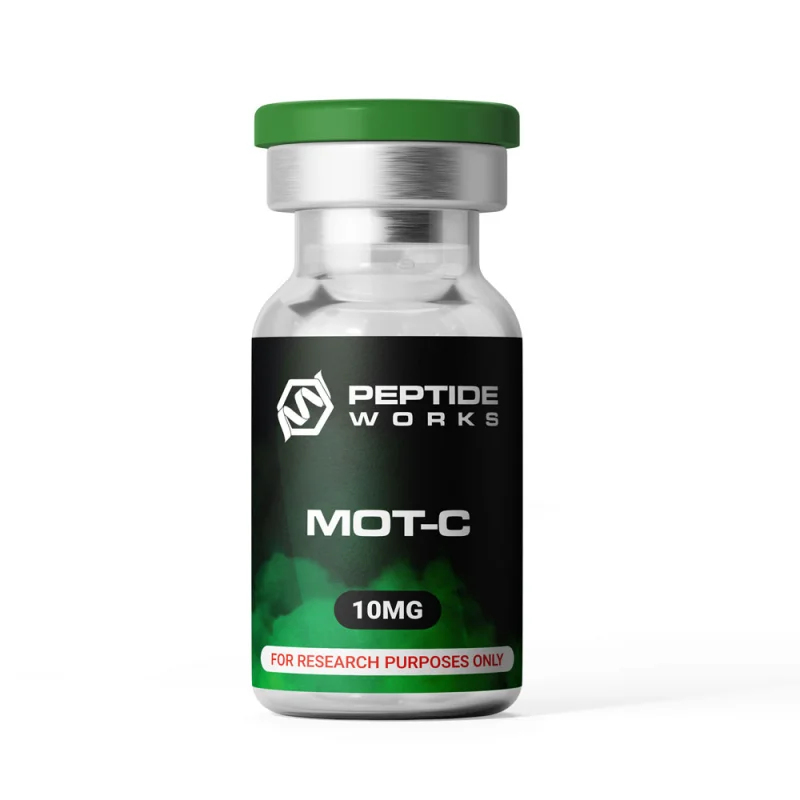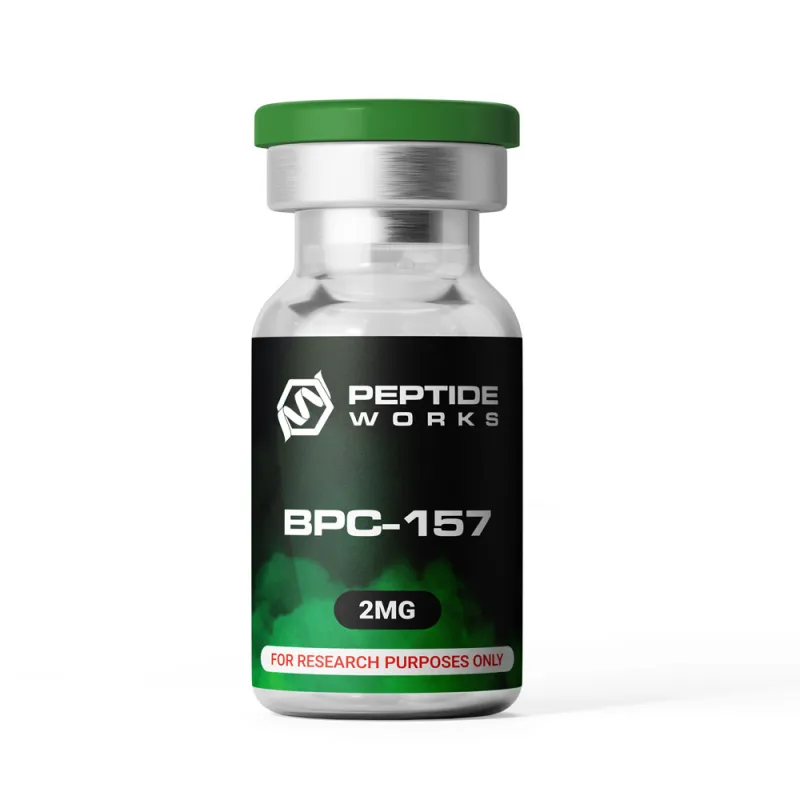PROMO!
First order? Get 10% OFF with this code: 1storder
Peptide purity shows how much of a peptide sample matches the exact amino-acid sequence produced during synthesis. During synthesis, the system creates small by-products, including incomplete chains and fragments. Peptide purity indicates the proportion of the sample that is the correct sequence and the proportion that consists of unwanted impurities. Higher purity levels provide researchers with cleaner, more reliable material for scientific work.
At Peptide Works, we use controlled synthesis methods and strict verification steps to produce research-grade peptides with consistent impurity profiles. Most peptides reach 99% purity, and complex sequences reach 98% after analysis. These purity levels help the peptide perform as expected in demanding research environments.
Peptide purity plays a major role in overall peptide quality. When the material is pure, it behaves predictably and supports data that researchers can trust. High purity helps scientists see the peptide’s actual effects and draw more precise conclusions from their studies.


Peptide purity has a direct impact on the quality of research results. When a peptide contains impurities, even at low levels, those unwanted fragments can interact with receptors, enzymes, or cell systems in ways that do not reflect the peptide’s true behavior. These off-target interactions can shift results, create misleading signals, or mask the response researchers expect to observe.
High-purity peptides reduce this risk by allowing the intended sequence to guide the biological activity. This clarity helps researchers understand how the peptide behaves in controlled systems and makes it easier to identify meaningful patterns in their data. It also supports consistent outcomes in studies that depend on precise measurements, including receptor assays, pathway analysis, and cell-based models.
Purity becomes even more important when a study requires tight control of variables. Clean material helps researchers avoid false positives, inconsistent responses, and unnecessary noise in the data. When the peptide performs without interference, teams can move forward with greater confidence and draw conclusions supported by clear, reliable evidence.
Researchers measure peptide purity using High-Performance Liquid Chromatography (HPLC), a trusted analytical method in research and manufacturing settings. HPLC separates the components in a peptide sample based on their chemical properties. As the sample moves through the column, each component appears at a different time, allowing analysts to identify what is present.
The results appear as a chromatogram, which displays a series of peaks. The largest peak represents the intended peptide sequence, while smaller peaks show impurities. Analysts calculate the purity percentage by comparing the area of the main peak with the total peak area. This gives a clear and accurate view of how much of the sample is the correct peptide and how much consists of trace contaminants.
Peptides from Peptide Works may include a Certificate of Analysis (COA) with the verified purity percentage and the corresponding HPLC chromatogram when applicable. This documentation allows researchers to review the analytical information and confirm that the material aligns with the standards required for dependable scientific work.
Explore our complete collection of high-purity peptide vials verified by HPLC analysis for reliable research results.

Peptide purity levels help researchers understand how refined a peptide is and how closely it matches its intended sequence. Each grade serves a different purpose in research and reflects the degree of cleanup performed after synthesis.
Crude Peptides (≈50–70%) contain many incomplete sequences and synthesis by-products. These materials are not suitable for studies that require stable or interpretable results.
Desalted Peptides (≈70–85%) go through basic cleanup to remove salts and simple impurities. They still contain noticeable by-products and are used mainly for early or non-critical screening work.
Standard Purity (≥90%) supports general research where low-level impurities do not affect early observations. It works well for broad discovery studies.
High Purity (≥95%) offers more consistent performance and predictable activity. Researchers often choose this grade for assays that require precise and repeatable behavior.
Premium / Ultra-High Purity (≥98–99%) provides the closest match to the intended sequence. This level supports precise, reproducible results in cell-based systems, biochemical assays, and studies that demand high accuracy and minimal interference.

Researchers choose high-purity peptides because they want material that supports accurate interpretation and reduces unnecessary risk. A clean peptide eliminates guesswork and allows researchers to evaluate outcomes without interference from unrelated components. This level of clarity strengthens decision-making and helps maintain control over a study’s direction.
High-purity peptides also support stronger continuity as projects advance. When the material stays consistent from one stage to the next, researchers can validate findings, confirm trends, and move through each phase without disruptions caused by variable quality. This stability becomes essential in work that depends on reliable comparisons and precise analytical outcomes.
At Peptide Works, we supply high-purity peptides trusted by both individual researchers and laboratories. Our production standards focus on accuracy, consistency, and reliable performance. With worldwide delivery, we make it easy for research teams in any region to access the peptides they need without delays or supply barriers.
ALL CONTENT AND PRODUCT INFORMATION AVAILABLE ON THIS WEBSITE IS FOR EDUCATIONAL PURPOSES ONLY.
DISCLAIMER: These products are intended solely as a research chemical only. This classification allows for their use only for {name} research development and laboratory studies. The information available on our Peptide Works website: https://peptide-works.com/ is provided for educational purposes only. These products are not for human or animal use or consumption in any manner. Handling of these products should be limited to suitably qualified professionals. They are not to be classified as a drug, food, cosmetic, or medicinal product and must not be mislabelled or used as such.